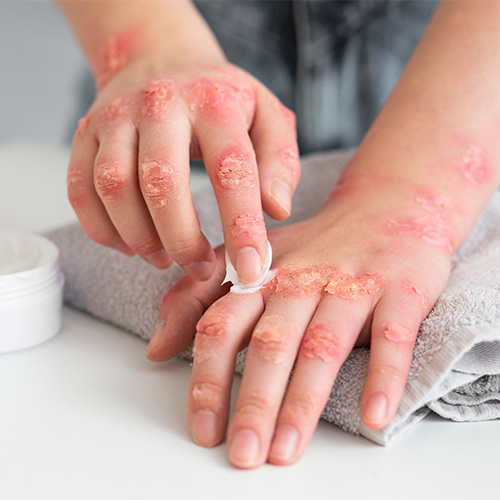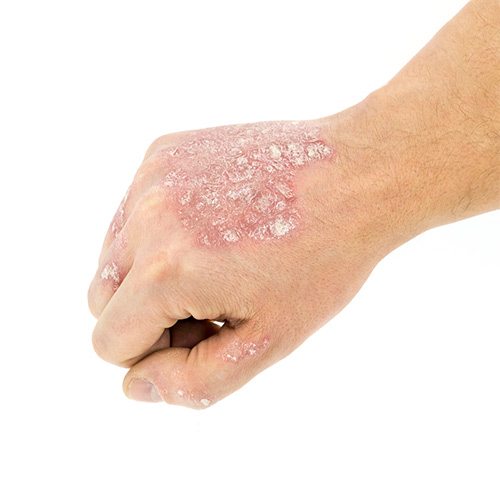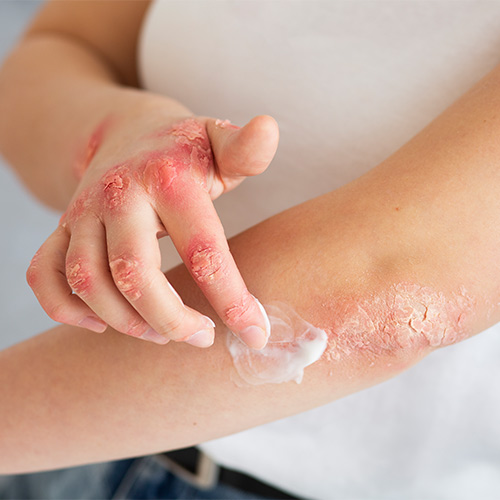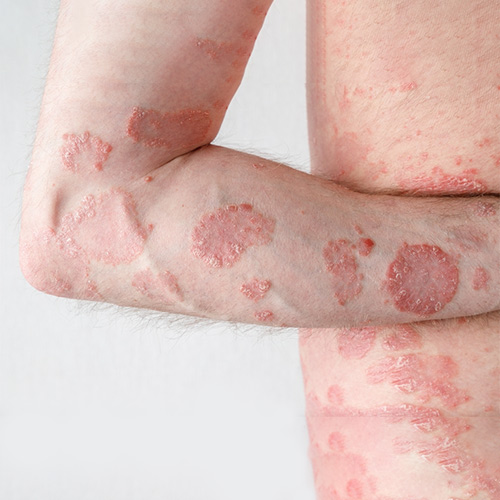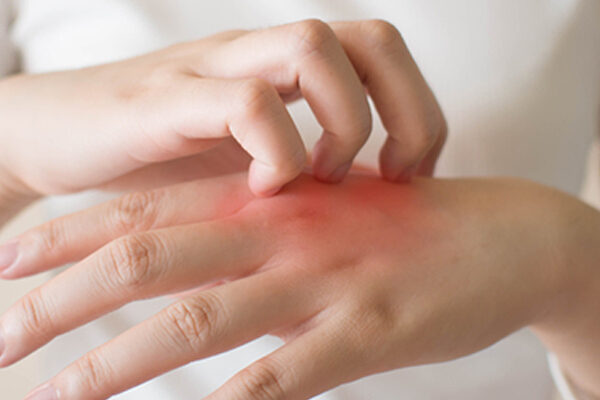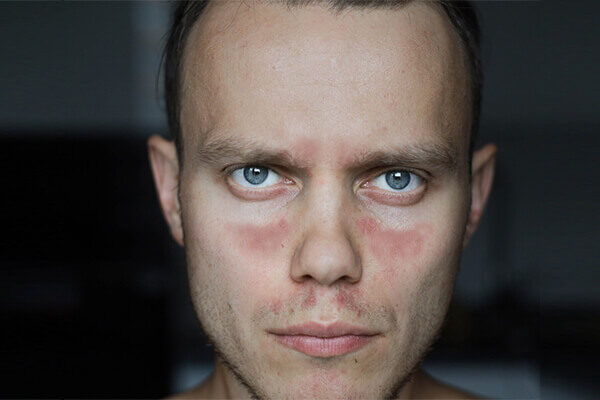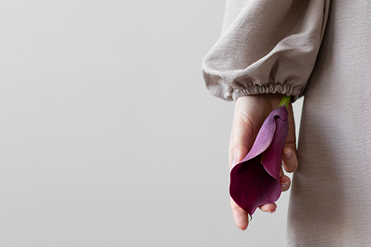Updated on January 24, 2024
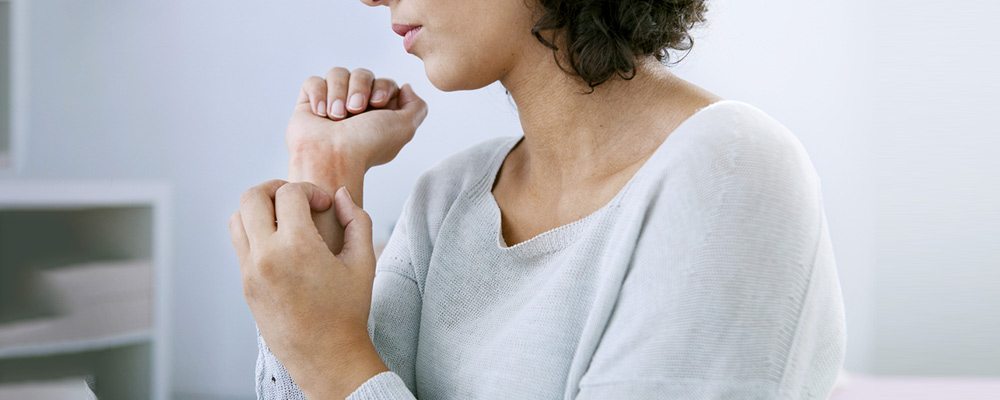
Psoriasis vulgaris, as the name implies, is the most prevalent form of psoriasis. The term “vulgaris” originates from Latin, meaning common. It manifests as scaly, inflammatory patches throughout the body.
This article aims to provide insights into the nature of this kind of psoriasis, explaining its obvious triggers, appearance, and symptoms. It also highlights other forms of psoriasis and describes the available treatment options and the effective management strategies.
For an in-depth understanding of the triggers, symptoms, treatments, and management plan of psoriasis vulgaris, keep on reading.
Overview
Psoriasis affects about 7.5 adults in the US. It is a chronic autoimmune condition and requires appropriate medical attention. In individuals with psoriasis vulgaris, there is an elevated formation of skin cells, that leads to the development of plaque-like areas on the skin.
Several factors can trigger this condition, some of them are mentioned below alongside a plan for their effective management:
| Triggers | Management Plan |
|---|---|
| Certain food allergies | Food allergies can be avoided by monitoring your diet regularly and discovering changes to minimize the impact of certain foods. |
| Skin Injury | By carefully adopting a gentle skin-care routine, avoiding harsh chemicals, protecting the skin with appropriate sunscreen and clothing. |
| Stress | By practicing stress-reduction techniques to minimize stress, consider incorporating yoga, deep breathing exercises, or meditation. |
| Medication | Under proper medical guidance, medications such as topical corticosteroids, which reduce inflammation and itching may be prescribed. |
| Infection | It can be avoided by sustaining a healthy immune system by regular exercise, adequate sleep, balanced and proper hygiene. |
| Smoking | To quit smoking, set aside a specific date first. This will give you time to prepare emotionally and mentally. |
It is crucial to realize that these triggers can be painful for individuals, however, the condition itself is not contagious.
Symptoms:
Psoriasis vulgaris results in the formation of scales or plaques on the skin areas such as the scalp, knees, hands, feet, face, and elbows. The majority of symptoms include:
- Inflamed plaques
- Silvery patches occurring on certain body parts
- Itchiness
- Burning
- Stinging in areas where plaques develop
The appearance of plaques varies according to skin color, such as:
Light Skin: Red or pink skin with silvery-white plaques.
Brown Skin: Silver-white plaques alongside coral-colored skin.
Black Skin: Gray plaques with purplish or darker surrounding skin.
In certain cases, some individuals may opt for treatments to lighten or darken their skin which is caused by depigmentation of the skin.
Levels of Psoriasis Vulgaris
The potential treatment is determined by the severity of the condition. Physicians categorize psoriasis into mild, moderate, or severe cases:
| Severity | Percentage of Plaque |
|---|---|
| Mild | Characterized by plaques affecting less than 2 % of the body. |
| Moderate | Includes plaques affecting 3-10 % of the body. |
| Severe | Involves individuals with 10 % or more of their skin developing plaques. |
Treatment Options for Psoriasis Vulgaris
It is strongly recommended to seek guidance from your healthcare professionals for personalized advice. Additionally, numerous medical treatment options are available for individuals with this condition, including:
- Topicals: Healthcare providers may prescribe topical steroids to lessen the swelling and redness associated with plaques. Nonsteroidal treatments, such as those consisting of synthetic vitamin D3 and vitamin A, may also be recommended. Certain over-the-counter medications such as coal tar can readily assist in managing mild psoriasis.
- Systemics: These are medications that address this condition internally. It can be administered orally in liquid or pill form, or through infusion or injection.
- Phototherapy: This treatment involves exposing the skin to UV light under medical supervision.
Moreover, various clinical organizations are investigating potential treatment options for psoriasis to enhance the overall condition.
Home Remedies for Psoriasis Vulgaris
Individuals can take several measures to reduce the likelihood of flare-ups associated with this condition at home. These remedies include:
- Taking care of foods or alcohol known to trigger flare-ups
- Utilizing corticosteroid creams
- Quitting smoking
- Preventing excessive dryness
- Employing a humidifier to maintain optimal moisture
- Investing in good skin-care products
- Using moisturizers to prevent dryness
- Devoting time to activities you love
Other Types of Psoriasis
Although it is the most prevalent form, there are also other types, such as:
Inverse Psoriasis: It manifests as a red patch in body folds like armpits.
Erythrodermic Psoriasis: A severe type causing itchy rashes.
Palmoplantar Psoriasis: Characterized by painful blisters on hands and feet.
Arthritis Psoriasis: Affects both joints and skin.
Eyelid Psoriasis: Psoriasis affecting the eyelids.
Summary
Psoriasis vulgaris represents the most prevalent form of psoriasis and is incurable. However, effective treatment and management plans are available, assisting individuals in diminishing the severity of plaques or flare-ups with the right approach. Moreover, if individuals suspect they have this condition, it is suggested to consult a healthcare professional near them for a confirmed diagnosis and initiate prompt treatment.

